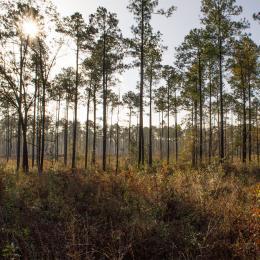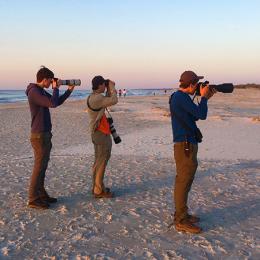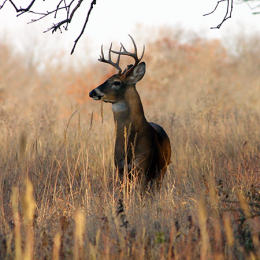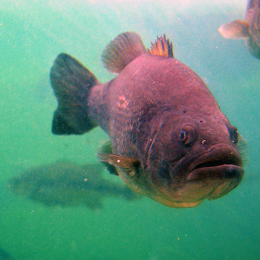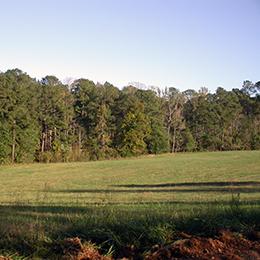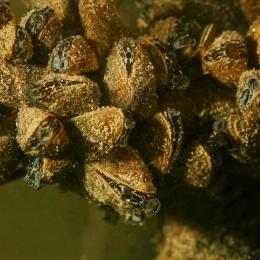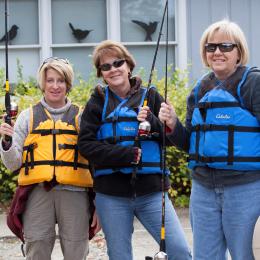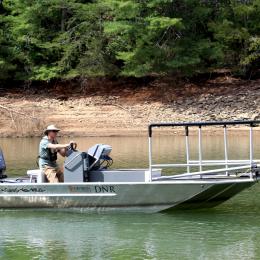The national bird is still flying high in our state.
Annual bald eagle surveys by the Georgia Department of Natural Resources found the iconic raptors nesting at average to just below average levels in the southern part of the state, which is where this year’s surveys focused. Of 176 active nests, 127 were successful, fledging an estimated 190 eaglets, according to survey leader Dr. Bob Sargent.
Accounting for areas not monitored this year, Sargent said the numbers suggest Georgia has maintained over 200 nest territories a year since 2015, the first time the state count topped that milestone. Twenty-five years ago, only 55 nest territories were reported in Georgia.
DNR monitors eagle nesting by helicopter, splitting the state into five sections. While the coast is surveyed annually, other areas are checked at least every other year. (The entire state is flown every five years.) Flights in January and February mark nests in use. Follow-up flights in March and April gauge nest success rates – the number of nests fledging at least one young.
This year’s survey covered southwest Georgia, plus the coastal counties and barrier islands. The results also included 16 nests monitored by volunteers or biologists with partner agencies.
Nest success rates ranged from slightly below average in southwest Georgia (68 percent) to average on the coast (73 percent). The regional difference isn’t surprising, said Sargent, a program manager with DNR’s Wildlife Conservation Section. “It is not unusual for nest success rates on the coast to be higher than elsewhere in Georgia, which likely reflects more abundant food resources in estuaries.”
The 190 eaglets fledged equates to 1.5 per successful nest, which is in line with the state’s long-term average. But there were notable differences between this year’s data and the last time both areas were surveyed in the same year – 2023.
Sargent said that two years ago the southwestern region had 92 territories, 69 successful nests (a 75 percent success rate) and 113 eaglets fledged. Those numbers slipped this year to 79 territories, 54 successful nests (68 percent success) and 86 fledglings.
The decline in nests territories likely resulted from storm damage, which would not be unusual, particularly with hurricanes Helene and Milton sweeping through Georgia last fall, according to Sargent. “During the January survey of that area, I saw a few more falling and fallen nests than I usually see.”
However, he said the dip in the number of successful nests and fledglings may point to avian influenza, which ravaged bald eagles on the coast in 2022. Sargent recorded more empty nests than usual along the lower Chattahoochee River and some southwest Georgia reservoirs this winter.
“It’s entirely possible the eagle population in that area took a delayed hit from avian influenza. I say delayed because eagle mortalities and nest failures from the initial outbreak of the disease were confined to the coastal counties. But we know from necropsy reports this past winter that the disease has since spread to inland eagles, especially so among birds in the Chattahoochee watershed.”
If so, the way eagle nesting bounced back on the coast may spur hope. In 2022, as bird flu waylaid adult and young eagles in coastal counties, Sargent reported only 34 successful coastal nests and 50 fledglings. Yet those counts rose the next year and reached a healthy 59 successful nests and 83 eaglets fledged this year.
Bald eagles have shown a penchant for rebounding – in Georgia and across the species’ range. Factors feeding that recovery include a U.S. ban on DDT use in 1972, habitat improvements after enactment of the federal Clean Water and Clean Air acts, protection through the Endangered Species Act, increased public awareness, regrowth of forests and restoration of local populations through release programs.
Following a steep decline in the eagle population in Georgia, the state went from no known successful nests during most of the 1970s to one in 1981, 55 by the turn of the century and more than 200 today.
The public is encouraged to report eagle nests to georgiawildlife.com/bald-eagle, (478) 994-1438) or bob.sargent@dnr.ga.gov. Such reports typically lead to the discovery of 10-15 new nests a year. (Note: Osprey nests are sometimes confused with eagles. Learn more at georgiawildlife.com/bald-eagle.)
DNR works with landowners to help protect bald eagle nests on private property. Although delisted from the Endangered Species Act in 2007, eagles are protected by the Bald and Golden Eagle Protection Act, the Migratory Bird Treaty Act, and state law. In Georgia, the species is classified as threatened.
The surveys of these birds are part of DNR Wildlife Conservation Section’s mission to conserve nongame wildlife – native animals not legally hunted or fished for – along with native plants and natural habitats.
The conservation of bald eagles is supported in part by people who buy an eagle or monarch license plate or renew these or the older hummingbird designs. The tags cost only $25 more than a standard license plate and $19 of each purchase and $20 of each annual renewal goes to help conserve eagles and hundreds of other Georgia plant and animal species listed as species of conservation concern.
EAGLE NESTING IN GEORGIA/AT A GLANCE
- Occupied bald eagle nest territories: 176*
- Successful nests: 127
- Young fledged: 190 (1.5/nest)
- New nests (first time surveyed): 16
- Overall nest success rate: 72 percent
- By region (occupied nests/successful nests/young fledged/new nests):
- Coast: 81 occupied; 59 successful; 83 fledged; five new nests
- Southwest: 79 occupied; 54 successful; 86 fledged; six new
- Nests monitored (apart from flights): 16 occupied; 14 successful; 21 fledged; three new
*Not a statewide survey
SOURCE: Georgia DNR
HOW THIS WORKS
DNR began monitoring bald eagle nesting in Georgia in the 1980s. The Wildlife Conservation Section now checks nest territories by helicopter in January-February and again in March-April. Following 2017, the statewide survey was scaled back. From 2018-2020, about 50-70 percent of Georgia was surveyed annually. Because of COVID, only the coastal counties were flown in 2021. In 2022, the entire state was surveyed again.
Since 2017, the survey has been split into five regions: the six coastal counties, southwest Georgia, east/northeast (most of the area between Interstates 16 and 85 east of Atlanta and Macon), north/northwest and southeast (bounded by interstates 75 and 16 and west of the coastal counties). Coastal counties, where about a third of nest territories are found, are surveyed annually. Other sections are checked in an every-other-year rotation. The southeast area has the fewest nests and is mostly monitored by volunteers on foot. In 2023, DNR added a survey route covering an upside-down triangular area from Atlanta (northwest corner) to Athens (northeast corner) to Macon (inverted apex).
Flights involve two rounds. The first, started between January’s second and fourth week, focuses on finding active nests. An active nest is one with eggs, eaglets (rare in Georgia in January), an adult eagle in an incubating posture or evidence eagles have been prepping it for use. The second round of flights, from mid-March to early April, gauges the reproductive outcome of those nests and checks reports of new ones. By late winter, most nests have eaglets 4-14 weeks old or they are empty because the nest failed or, in a few cases, the eaglets fledged.
Nest cycles: DNR survey leader Dr. Bob Sargent said there is a marked latitudinal gradient for the timing of the nest cycle. Eagles on the coast nest and fledge young earlier than those in middle Georgia and much earlier than those nesting around mountain reservoirs. As with all birds, the causes of nests failing vary. They include severe weather, the death of one or both parents, insufficient food available to rear the young and predation of eggs or the young by raccoons, great horned owls and other wildlife.
Aviation aid: By the end of the 2025 surveys, Sargent and DNR pilots Capt. Jaye Bridwell, Lt. Ryan Buller and Lt. Sam Miller had peeked into scores of nests. Sargent calls the pilots “ornithologists in training” and said their role in the surveys goes beyond flying. “They often find the nests before I do, they are as fascinated by the big birds as I am and they are especially conscientious about keeping a safe distance from the nests – for the eagles’ sake – while giving me the best possible look at the contents. The success of these survey efforts is in large part due to the talent and dedication of our pilots.”






